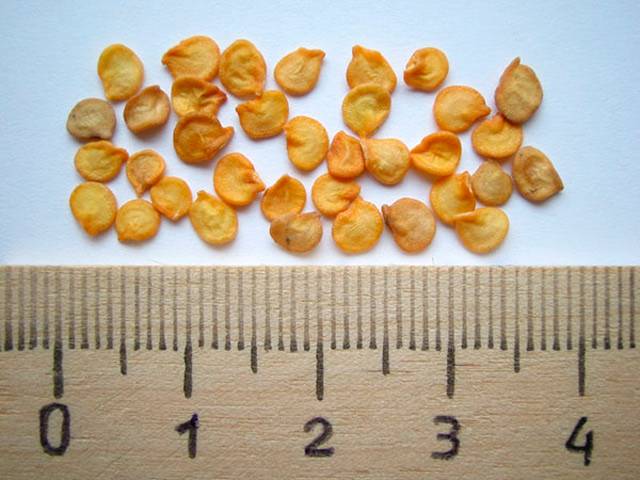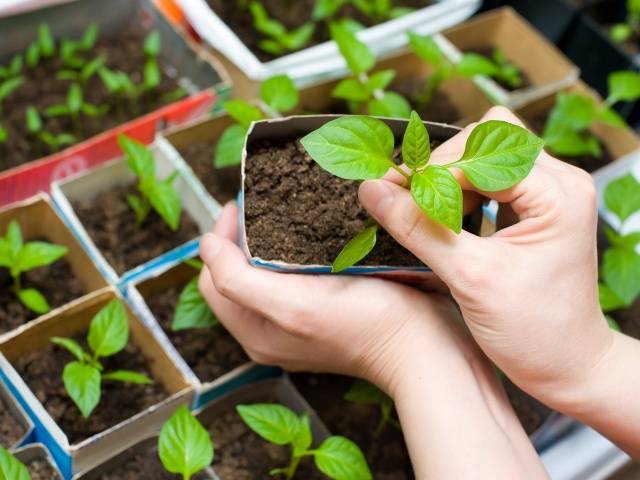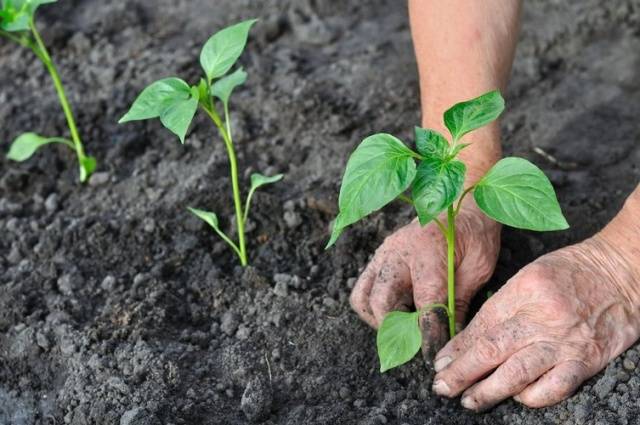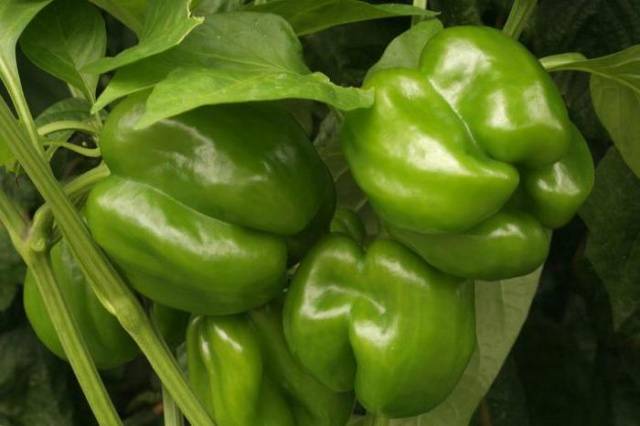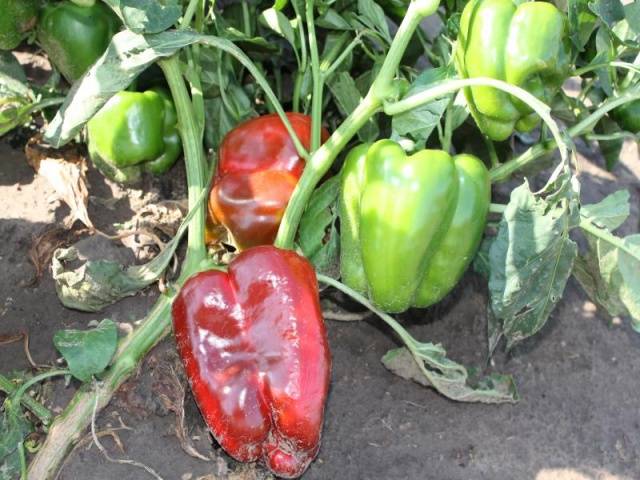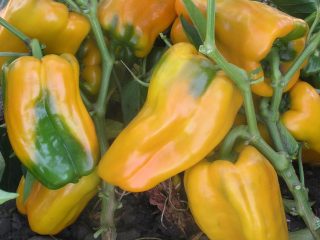Content
Pepper Claudio is a hybrid obtained from Dutch breeders. It is grown in summer cottages and on farms. The variety stands out for its early ripening and disease resistance. Its presentation and taste of the vegetable are highly valued.
Below are a photo, a description of Claudio pepper, as well as the features of its cultivation and care.
Botanical description
Claudio pepper has a number of characteristics:
- early ripening hybrid variety;
- seed germination from 97 to 100%;
- after the transfer of seedlings, fruiting occurs on the 70-80 day;
- powerful erect bushes;
- the height of the bushes is from 50 to 70 cm;
- up to 12 fruits grow on one plant.
Features of the fruit of the Claudio variety:
- weight 200-250 g;
- wall thickness 10 mm;
- prismatic shape with 4 chambers;
- unripe peppers have a rich green color that changes to dark red;
- high taste.
The variety is suitable for planting in greenhouses and in open areas. Claudio pepper is distinguished by good transportability and withstands long-term transportation.
The fruits of the Claudio variety are harvested in a state of technical maturity, then their shelf life is up to 2 months. If the fruits are already red, then they need to be picked and used as soon as possible. The Claudio variety is suitable for canning and daily diets.
Seedling peppers
Pepper Claudio F1 is grown by seedling method. First, prepare the soil and containers in which the seeds are placed. After germination, the seedlings are looked after and transferred to a permanent place.
Preparing for landing
Peppers are planted in February - March. Before carrying out work, the seeds of the Claudio variety are immersed in water heated to 50 degrees. When the seed swells, it is wrapped in a damp cloth and left warm for 3 days. This stimulates the emergence of sprouts.
If the seeds are covered with a colored shell, then they do not need additional processing. The manufacturer has coated the material with a nutrient mixture that promotes plant development.
For planting the Claudio variety, a soil is prepared, which includes:
- humus - 1 glass;
- sand - 1 glass;
- garden soil - 1 glass;
- wood ash - 1 spoon.
The components are mixed and disinfected in a heated oven or microwave. After cooling, the soil is laid out in separate cups. The seeds of the variety are buried in the ground by 2 cm. You can plant 2-3 seeds in one container, then choose the strongest plants.
When using boxes of grown seedlings of the Claudio variety, a pick will be required. Pepper does not respond well to transplanting, so it is recommended to immediately plant the seeds in separate containers.
After planting, the soil is watered, and the containers are covered with glass or polyethylene. For several days, planting is kept in a warm place until the seeds germinate.
Seedling conditions
When shoots appear, Claudio peppers need special care:
- daytime temperature is about 26 degrees;
- night temperature - 12 degrees;
- moderate soil moisture;
- watering with settled water.
Seedlings are provided with high humidity. Sprinkle the peppers with warm water. When exposed to cold water, plants are stressed, develop slowly and become susceptible to disease.
The room with Claudio seedlings is regularly ventilated. For 12 hours, the plants are provided with access to light.
When the peppers have a second leaf, they are fed with liquid fertilizer Agricola or Fertika... The second feeding is performed after 14 days.
Planting peppers
When the first buds form in the Claudio variety, it is planted in a greenhouse or in open areas. The work is carried out at the end of May, when the air warms up to 15 degrees.
Pepper prefers light soil with low acidity. Soil preparation begins one year before planting. The best predecessors for culture are zucchini, cucumbers, onions, pumpkin, carrots.
In the fall, when digging the soil for 1 sq. m make 5 kg of compost, 50 g of superphosphate and potassium sulfate. In the spring, before planting, add 30 g of ammonium nitrate.
When planting between the peppers, Claudio is left 40 cm.If several rows are organized, then intervals of 70 cm are made between them.
Claudio pepper is planted in the wells, where they are previously placed in 1 tbsp. l. any complex fertilizer containing phosphorus, nitrogen and potassium. Plants are lowered into the hole without deepening the root collar. After covering the roots with earth, abundant watering is performed.
Care scheme
With proper care, Claudio F1 Peppers give a good harvest. The plantings are watered and fed, and the beds are mulched, loosened and weeded from weeds.
A healthy and strong Claudio bush is obtained through formation. On each plant, the central flower growing on the first branch is removed. As a result, the yield of the crop is increased. The peppers are formed into 2 or 3 stalks. Lateral shoots are pinched by hand.
Watering
According to reviews, Claudio pepper develops well even in drought. However, the maximum yield is removed with the correct organization of irrigation.
The Claudio variety is watered every week until flowering begins. With the formation of fruits, the intensity of watering is increased up to 2 times a week. After adding moisture, the soil is carefully loosened so as not to damage the roots of the peppers.
With a lack of moisture in peppers, development slows down, leaves droop, ovaries fall off. Mulching the beds with rotted straw helps to keep the soil moist.
Top dressing
The peppers are fed with a solution of chicken manure in a ratio of 1:10. During the season, the procedure is repeated twice. Fertilizer is applied at the root.
Plants are sprayed with a solution of nitrophoska (1 tablespoon per bucket of water). Processing is carried out on the sheet in the morning or evening, when there is no direct sunlight.
To pollinate Claudio peppers, insects are attracted to the site. Therefore, the plantings are sprayed with a solution consisting of 2 liters of water, 4 g of boric acid and 0.2 kg of sugar. Boric acid stimulates the formation of ovaries in plants.
The lack of nutrients in peppers is determined by external signs:
- curled leaves and dry edges indicate a lack of potassium;
- in the presence of dull small leaves, the plants are fed with nitrogen;
- the appearance of a purple tint on the underside of the leaf indicates the need to add phosphorus.
Protection against diseases and pests
Claudio remains resistant to the tobacco mosaic virus. This is a dangerous disease, which can only be dealt with by destroying the affected plants.
Fungal diseases affect peppers that grow in high humidity conditions. To combat them, the plantings of the Claudio variety are sprayed with Akara, Oxykhom, Barrier, Zaslon. After 20 days, the treatment is repeated.
The Claudio variety attracts aphids, spider mites, slugs and wireworms. An infusion of wood ash or tobacco dust helps to fight aphids. Spider mites are scared off with infusion of dandelion leaves or onion husks.
Traps made from sweet root vegetables are effective against wireworms, which attract pests. For slugs, mustard powder, ground hot pepper are used.
Pest insecticides are used with caution. Effective drugs that decompose quickly are Keltan and Karbofos.
Gardeners reviews
Conclusion
Claudio pepper is a high-yielding variety with sweet fruits. It is appreciated for its early ripening, good taste, and versatility. Plants need care, which means watering, feeding, and forming a bush.

